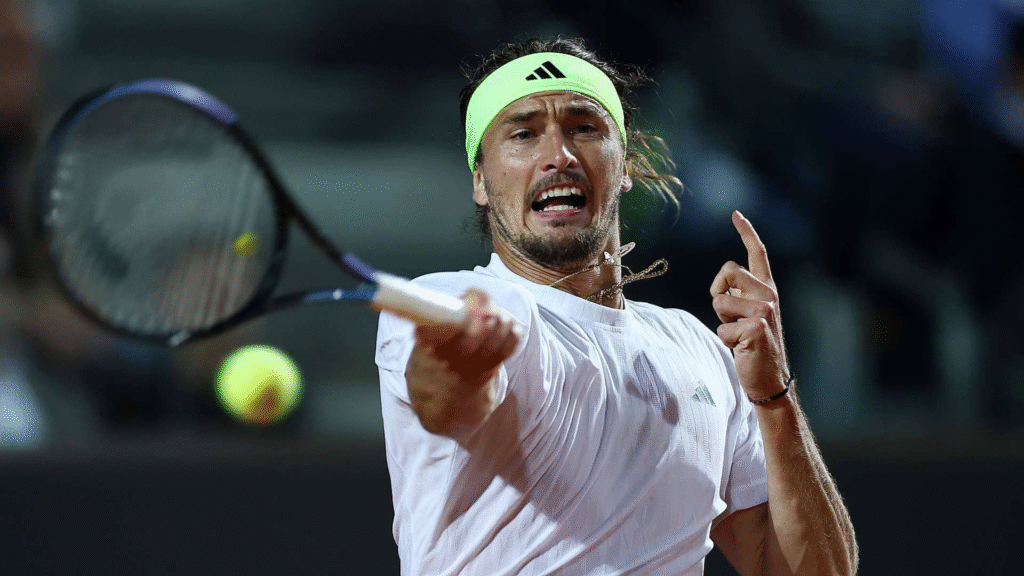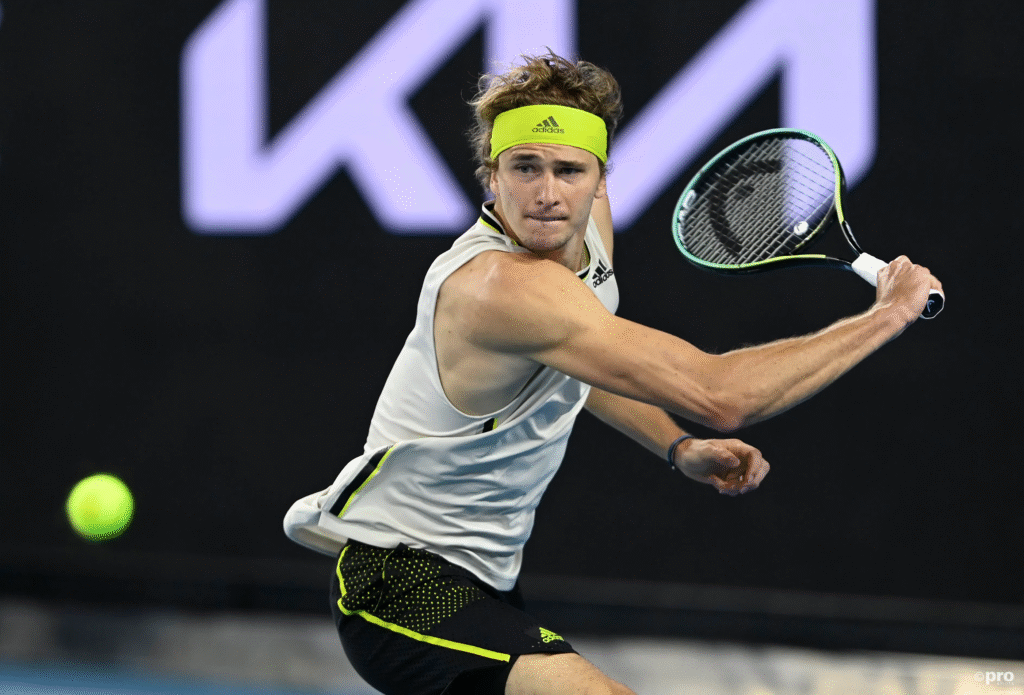
The Hamburg European Open, one of the most storied events on the ATP calendar, was the stage for a compelling contest between Germany’s top tennis talent Alexander Zverev and the young American Aleksandar Kovacevic. This encounter, filled with intensity, tactical nuance, and athleticism, showcased not only the prowess of Zverev as a top-tier competitor but also the rising potential of Kovacevic on the professional circuit.
Setting the Stage: Hamburg’s Historic Clay Courts
The Rothenbaum Tennis Center in Hamburg, Germany, serves as an iconic venue for this ATP 500 event. With its rich heritage dating back over a century, the Hamburg European Open has long been revered as a critical battleground for players specializing in clay court tennis. The slower surface demands patience, endurance, and strategic shot selection — qualities that challenge even the most skilled athletes.
In 2025, the tournament attracted an impressive field, blending established stars with promising newcomers. Alexander Zverev, hailing from Hamburg himself, entered the tournament carrying the hopes of the home crowd. His quest to capture the title on familiar soil was met with anticipation and excitement from fans eager to see their compatriot excel.
Opposing him was Aleksandar Kovacevic, a young American player who has been steadily rising through the ranks. Known for his powerful groundstrokes and tenacious style, Kovacevic has been making waves on the tour, aiming to cement his status as a formidable competitor, particularly on the clay courts where patience and precision are rewarded.
The Players’ Journey: Background and Season Form
Alexander Zverev, born in Hamburg, has long been regarded as one of Germany’s most promising tennis prodigies. Bursting onto the scene in his teenage years, Zverev’s rise was marked by his aggressive baseline play, towering serve, and mental toughness. Despite some ups and downs, including injuries and intense competition, he has remained a consistent presence in the top echelons of the sport.
The 2025 season has been a rollercoaster for Zverev. After recovering from a minor injury in the early months, he returned to the circuit with a renewed focus on clay court performance. His aim was clear: to prepare meticulously for the European clay season and ultimately, the French Open. Hamburg, therefore, was not just another tournament but a vital milestone in his journey.
Aleksandar Kovacevic, in contrast, is a player on the rise. Born in the United States, he has demonstrated a raw power game combined with increasing tactical awareness. His journey through the ATP Challenger circuit and qualifications has earned him respect among peers and pundits. The Hamburg European Open presented Kovacevic with a golden opportunity to test his mettle against an established star on a prominent stage.
The Clash Begins: A Test of Strength, Skill, and Strategy
The match began under clear skies, with an enthusiastic crowd providing a rousing backdrop. Zverev, buoyed by the support of his hometown fans, took to the court with characteristic confidence. Kovacevic, unfazed by the occasion, started aggressively, unleashing powerful forehands and backhands that immediately challenged Zverev’s defenses.
The opening games were a chess match, with both players probing each other’s weaknesses. Kovacevic’s aggressive baseline play was met by Zverev’s experience and tactical variety. The German’s ability to mix deep topspin shots with occasional net approaches disrupted Kovacevic’s rhythm. The clay surface slowed down the ball, creating extended rallies that tested stamina and shot selection.
In the first set, Zverev managed to secure an early break of serve, capitalizing on a few unforced errors from Kovacevic. The German’s serve, often a lethal weapon, helped him consolidate the break as he maintained focus during key points. Despite Kovacevic’s efforts to claw back, Zverev’s composure and shot-making earned him the first set 6-4.
Tactical Analysis: Zverev’s Versatility vs. Kovacevic’s Power
The match illustrated a classic confrontation between tactical versatility and raw power. Zverev’s game is built on a foundation of precision serving, heavy topspin groundstrokes, and deft touch at the net. He carefully constructed points, often using angled shots to open the court and then finishing points with well-timed volleys.
Kovacevic’s approach, on the other hand, was to dictate play with aggressive baseline hitting, trying to shorten points and overpower his opponent. His forehand, in particular, was a formidable weapon, and his movement around the court showed marked improvement.
The clay surface played a significant role in influencing tactics. The slower court rewarded patience and consistency, which benefited Zverev’s style. However, Kovacevic’s aggression kept the rallies dynamic, forcing Zverev to remain vigilant.
The Second Set Drama: Mental Strength and Physical Endurance
The second set was a testament to both players’ mental and physical endurance. With the score closely contested, every game became a battle of wills. Kovacevic, refusing to be discouraged by the first set loss, raised his level, displaying improved shot selection and minimizing unforced errors.
Zverev, aware of the stakes, maintained his focus and tactical discipline. The German’s ability to save break points and capitalize on crucial opportunities was evident as the set reached its climax. A critical break late in the set allowed Zverev to serve for the match.
The crowd’s support grew louder, sensing the potential for a home victory. Zverev, fueled by the atmosphere, served confidently to close out the match, securing a hard-fought 6-4, 6-4 victory over Kovacevic.
Post-Match Reflections: Player Reactions and Future Prospects
In his post-match interview, Alexander Zverev expressed satisfaction with his performance. He acknowledged the challenge posed by Kovacevic, praising the young American’s resilience and shot-making ability. Zverev emphasized the importance of maintaining focus throughout the tournament, highlighting that every match is an opportunity to improve and prepare for bigger challenges ahead.
Aleksandar Kovacevic, although disappointed by the loss, remained optimistic. He viewed the match as a valuable learning experience and motivation to refine his game further. His coach highlighted Kovacevic’s progress and predicted a bright future for the young player.
The Significance of This Win for Zverev and Hamburg

Zverev’s victory in Hamburg is more than just a step forward in the tournament. It symbolizes a comeback for the German star, reinforcing his status as a top contender on clay courts. The support from the home crowd provides additional motivation as he aims to capture the title and boost confidence ahead of major clay events.
Hamburg, with its rich tradition, remains a favorite tournament for many players. Success here often signals readiness for the grueling clay season culminating in Roland Garros. For Zverev, triumphing on home soil adds emotional value and career significance.
Looking Ahead: The Road to the Hamburg Title and Beyond
With this victory, Zverev advances deeper into the Hamburg European Open, facing increasingly tough opponents. Each match presents an opportunity to sharpen his game, address any weaknesses, and build momentum. Analysts predict that Zverev’s blend of experience, power, and adaptability makes him a favorite to contend for the title.
For Kovacevic, the tournament experience is invaluable. Facing a seasoned player like Zverev provides insight into the demands of top-level tennis. The young American’s progress signals potential future successes on the ATP Tour, with clay court proficiency being a vital componen
Alexander Zverev: A Deep Dive into His Career and Playing Style
Alexander Zverev, often referred to simply as Sascha, has been a prominent figure in men’s tennis since his breakout performances in his late teens. Known for his physical stature, standing over 6 feet 6 inches tall, he combines imposing power with surprisingly deft touch on court. Zverev’s serve is one of the most effective on the tour, capable of delivering aces and setting up easy winners.
His baseline game revolves around heavy topspin forehands and backhands, often allowing him to control rallies and dictate pace. Unlike many power players, Zverev also possesses solid net skills, making him a versatile competitor able to adapt to various surfaces, though clay remains a surface that particularly suits his all-around game.
Throughout his career, Zverev has had significant wins at Masters 1000 events, Olympic gold in 2021, and a consistent presence in the ATP Top 10. His challenges have included injury setbacks and tough losses in Grand Slam quarterfinals and semifinals. The Hamburg European Open provides a perfect venue for him to regain confidence and sharpen his form ahead of larger tournaments.
Aleksandar Kovacevic: Emerging Talent and Clay Court Aspirations
Aleksandar Kovacevic represents the new wave of American tennis players striving to make their mark internationally. While traditionally the U.S. has excelled on faster surfaces like hard courts, Kovacevic has made strides adapting his aggressive baseline game to clay, a surface requiring greater patience and strategic point construction.
His game is marked by a powerful serve and forehand, which he uses to dictate play early in points. Improvements in movement and defense have allowed him to extend rallies and challenge opponents more effectively. Kovacevic’s journey through Challenger tournaments and qualifications has been steady, with his appearance in Hamburg signaling his arrival at a higher competitive level.
His match against Zverev, despite ending in defeat, showcased his ability to compete with top players. Analysts note that with further refinement and experience, Kovacevic has the potential to become a regular feature in ATP events and climb the rankings.
Tactical Breakdown of the Match
Examining the match point by point reveals the subtle interplay of strategy and execution. Zverev’s plan was to use his serve to gain quick advantages and then employ heavy topspin shots to move Kovacevic around the court. His willingness to approach the net added pressure on the American, forcing him to execute passing shots under duress.
Kovacevic countered by attacking Zverev’s backhand, traditionally considered a slightly weaker wing. By stepping inside the baseline, Kovacevic aimed to take time away from Zverev, shortening points and reducing the German’s ability to reset. This aggressive tactic created several tense moments in games and pushed the match into extended rallies on multiple occasions.
Both players demonstrated high fitness levels, with long rallies testing endurance and mental focus. Zverev’s experience enabled him to maintain calm during key moments, while Kovacevic’s energy kept the match unpredictable.
Impact of the Hamburg European Open on the ATP Tour
The Hamburg European Open holds a significant place on the ATP Tour, classified as an ATP 500 event. This classification means it offers substantial ranking points and attracts many of the world’s top players, especially those looking to hone their clay court skills ahead of the Grand Slam events.
Winning in Hamburg not only provides a player with valuable points but also confidence and momentum for the European clay swing. For local fans and German tennis, Zverev’s performance here is of particular interest, as he represents one of the nation’s top hopes for Grand Slam success.
Fan and Media Reaction
The match generated considerable attention both in Hamburg and internationally. Fans appreciated the high quality of tennis and the dramatic exchanges between the two players. Media outlets highlighted Zverev’s resilience and Kovacevic’s promising display, with many analysts noting the match as a compelling example of the blend between established stars and upcoming talent on the ATP Tour.
Social media buzz reflected excitement about the tournament’s competitiveness and anticipation for the next rounds. The support for Zverev from his home crowd was a focal point, underscoring the emotional connection between player and fans.

